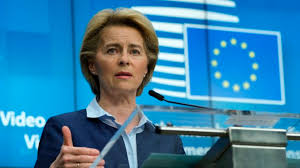
EU leaders have struck a deal on a huge post-coronavirus recovery package following a fourth night of talks. It involves €750bn (£677bn; $859bn) in grants and loans to counter the impact of the pandemic in the 27-member bloc.
Daily Current Affairs Quiz 2020
Key-Points
The EU’s GDP is set to contract by close to 8 per cent in 2020 thanks to the Covid-induced disruption.
There are three chief elements of the agreement.
- One, a Euro 1.1 trillion budget for the EU over the next seven years.
- Two, Euro 360 billion in low-interest loans for countries most hit by Covid-19.
- Three, Euro 390 billion in grants to the worst affected economies.
The recovery package stands out for a variety of reasons. One is, of course, its size — roughly $2 trillion or Rs 150 lakh crore or 75 per cent of India’s annual GDP.
Secondly, instead of individual countries raising funds, this time around, the EU as a whole will borrow money from the markets — a total of Euro 750 billion (for grants and loans). This is a radical departure from the past.
Thirdly, the EU will be able to impose taxes in the region to partially pay for the fund. This will entail an unprecedented level of fiscal coordination among the member states for the next seven years.
Fourthly, almost a third of the overall package — Euro 500 billion — has been earmarked towards countering climate change. This includes expenditure towards developing clean energy, promoting energy efficiency etc.
This deal still requires member states to ratify it. Even after ratification, implementation will be an issue because many countries such as Hungary and Poland may resist the reforms agenda that many of these grants and cheap loans might entail.





